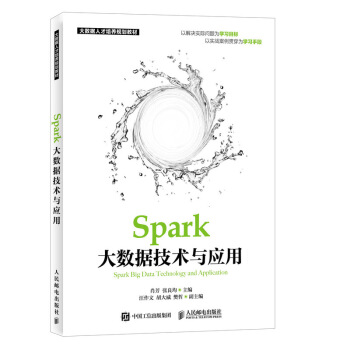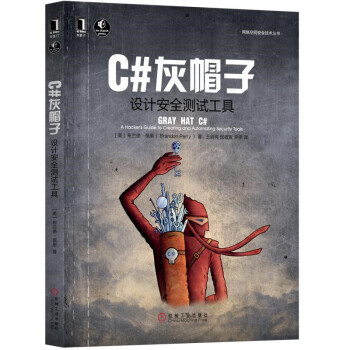![深度学习基础(影印版) [ Fundamentals of Deep Learning]](https://pic.tinynews.org/12310381/5aa5ecb1N6fe12616.jpg)

具体描述
内容简介
Google、微软和Facebook等公司正在积极发展内部的深度学习团队。对于我们而言,深度学习仍然是一门非常复杂和难以掌握的课题。如果你熟悉Python,并且具有微积分背景,以及对于机器学习的基本理解,本书将帮助你开启深度学习之旅。* 检验机器学习和神经网络基础
* 学习如何训练前馈神经网络
* 使用TensorFlow实现你的第1个神经网络
* 管理随着网络加深带来的各种问题
* 建立神经网络用于分析复杂图像
* 使用自动编码器实现有效的维度缩减
* 深入了解从序列分析到语言检验
* 掌握强化学习基础
作者简介
Nikhil Buduma是Remedy的联合创始人和首席科学家,该公司位于美国旧金山,旨在建立数据驱动为主的健康管理新系统。16岁时,他在圣何塞州立大学管理过一个药物发现实验室,为资源受限的社区研发新颖而低成本的筛查方法。到了19岁,他是国际生物学奥林匹克竞赛的两枚金牌获得者。随后加入MIT,在那里他专注于开发大规模数据系统以影响健康服务、精神健康和医药研究。在MIT,他联合创立了Lean On Me,一家全国性的非营利组织,提供匿名短信热线在大学校园内实现有效的一对一支持,并运用数据来积极影响身心健康。如今,Nikhil通过他的风投基金Q Venture Partners投资硬科技和数据公司,还为Milwaukee Brewers篮球队管理一支数据分析团队。
本书内容贡献者Nick Locascio是一位深度学习顾问、作家和研究者。Nick在MIT的Regina Barzilay实验室获得了本科和工程硕士学位,专业从事NLP和计算机视觉研究。他曾工作于多个项目,从训练神经网络到编写自然语言提示,甚至与MGH Radiology部门合作将深度学习应用于乳腺X线摄影的医学辅助诊断。Nick的工作已被MIT News和CNBC报道。在其闲暇之余,Nick为财富500强企业提供私人的深度学习咨询服务。他还联合创立了标志性的MIT课程6.S191 Intro to Deep Learning,教过300余名学生,听众包括博士后和教授。
目录
Preface1. The Neural Network
Building Intelligent Machines
The Limits of Traditional Computer Programs
The Mechanics of Machine Learning
The Neuron
Expressing Linear Perceptrons as Neurons
Feed-Forward Neural Networks
Linear Neurons and Their Limitations
Sigmoid, Tanh, and ReLU Neurons
Softmax Output Layers
Looking Forward
2. Training Feed-Forward Neural Networks
The Fast-Food Problem
Gradient Descent
The Delta Rule and Learning Rates
Gradient Descent with Sigmoidal Neurons
The Backpropagation Algorithm
Stochastic and Minibatch Gradient Descent
Test Sets, Validation Sets, and Overfitting
Preventing Overfitting in Deep Neural Networks
Summary
3. Implementing Neural Networks in TensorFIow
What Is TensorFlow?
How Does TensorFlow Compare to Alternatives?
Installing TensorFlow
Creating and Manipulating TensorFlow Variables
TensorFlow Operations
Placeholder Tensors
Sessions in TensorFlow
Navigating Variable Scopes and Sharing Variables
Managing Models over the CPU and GPU
Specifying the Logistic Regression Model in TensorFlow
Logging and Training the Logistic Regression Model
Leveraging TensorBoard to Visualize Computation Graphs and Learning
Building a Multilayer Model for MNIST in TensorFlow
Summary
4. Beyond Gradient Descent
The Challenges with Gradient Descent
Local Minima in the Error Surfaces of Deep Networks
Model Identifiability
How Pesky Are Spurious Local Minima in Deep Networks?
Flat Regions in the Error Surface
When the Gradient Points in the Wrong Direction
Momentum-Based Optimization
A Brief View of Second-Order Methods
Learning Rate Adaptation
AdaGrad——Accumulating Historical Gradients
RMSProp——Exponentially Weighted Moving Average of Gradients
Adam——Combining Momentum and RMSProp
The Philosophy Behind Optimizer Selection
Summary
5. Convolutional Neural Networks
Neurons in Human Vision
The Shortcomings of Feature Selection
Vanilla Deep Neural Networks Don't Scale
Filters and Feature Maps
Full Description of the Convolutional Layer
Max Pooling
Full Architectural Description of Convolution Networks
Closing the Loop on MNIST with Convolutional Networks
Image Preprocessing Pipelines Enable More Robust Models
Accelerating Training with Batch Normalization
Building a Convolutional Network for CIFAR-10
Visualizing Learning in Convolutional Networks
Leveraging Convolutional Filters to Replicate Artistic Styles
Learning Convolutional Filters for Other Problem Domains
Summary
6. Embedding and Representation Learning
Learning Lower-Dimensional Representations
Principal Component Analysis
Motivating the Autoencoder Architecture
Implementing an Autoencoder in TensorFlow
Denoising to Force Robust Representations
Sparsity in Autoencoders
When Context Is More Informative than the Input Vector
The Word2Vec Framework
Implementing the Skip-Gram Architecture
Summary
7. Models for Sequence Analysis
Analyzing Variable-Length Inputs
Tackling seq2seq with Neural N-Grams
Implementing a Part-of-Speech Tagger
Dependency Parsing and SyntaxNet
Beam Search and Global Normalization
A Case for Stateful Deep Learning Models
Recurrent Neural Networks
The Challenges with Vanishing Gradients
Long Short-Term Memory (LSTM) Units
TensorFlow Primitives for RNN Models
Implementing a Sentiment Analysis Model
Solving seq2seq Tasks with Recurrent Neural Networks
Augmenting Recurrent Networks with Attention
Dissecting a Neural Translation Network
Summary
8. Memory Augmented Neural Networks
Neural Turing Machines
Attention-Based Memory Access
NTM Memory Addressing Mechanisms
Differentiable Neural Computers
Interference-Free Writing in DNCs
DNC Memory Reuse
Temporal Linking of DNC Writes
Understanding the DNC Read Head
The DNC Controller Network
Visualizing the DNC in Action
Implementing the DNC in TensorFlow
Teaching a DNC to Read and Comprehend
Summary
9. Deep Reinforcement Learning
Deep Reinforcement Learning Masters Atari Games
What Is Reinforcement Learning?
Markov Decision Processes (MDP)
Policy
Future Return
Discounted Future Return
Explore Versus Exploit
Policy Versus Value Learning
Policy Learning via Policy Gradients
Pole-Cart with Policy Gradients
OpenAI Gym
Creating an Agent
Building the Model and Optimizer
Sampling Actions
Keeping Track of History
Policy Gradient Main Function
PGAgent Performance on Pole-Cart
Q-Learning and Deep Q-Networks
The Bellman Equation
Issues with Value Iteration
Approximating the Q-Function
Deep Q-Network (DQN)
Training DQN
Learning Stability
Target Q-Network
Experience Replay
From Q-Function to Policy
DQN and the Markov Assumption
DQN's Solution to the Markov Assumption
Playing Breakout wth DQN
Building Our Architecture
Stacking Frames
Setting Up Training Operations
Updating Our Target Q-Network
Implementing Experience Replay
DQN Main Loop
DQNAgent Results on Breakout
Improving and Moving Beyond DQN
Deep Recurrent Q-Networks (DRQN)
Asynchronous Advantage Actor-Critic Agent (A3C)
UNsupervised REinforcement and Auxiliary Learning (UNREAL)
Summary
Index
用户评价
作为一名对理论研究有一定追求的读者,我拿到《深度学习基础(影印版)》时,对其内容深度抱有很高的期望。而这本书在数学原理的阐述和算法的推导上,可以说达到了相当高的水准。书中关于“张量(Tensor)”的讲解就非常详尽,它不仅介绍了张量的基本概念和运算,还详细说明了在深度学习中张量是如何表示数据的,以及不同维度张量所代表的意义。这为理解后续的神经网络结构和计算过程打下了坚实的基础。让我印象特别深刻的是,书中在推导“BP算法”时,对每一个数学步骤都给出了详尽的解释,并且清晰地展示了如何利用链式法则计算梯度。虽然我具备一定的数学基础,但作者的严谨推导过程,还是让我对BP算法有了更加深刻和透彻的理解,也让我认识到,理论基础的扎实对于深入理解和改进模型是多么重要。它不仅仅是告诉你“怎么做”,而是让你明白“为什么这么做”。书中对“优化器(Optimizer)”的讲解也相当到位,它详细对比了SGD、Momentum、Adagrad、RMSprop以及Adam等各种优化算法的原理和特点,并分析了它们在不同情况下的表现。这让我明白,选择合适的优化器能够显著影响模型的收敛速度和最终性能。我尤其欣赏书中对“矩阵求导”的讲解,这是理解BP算法和模型优化的关键,作者的讲解非常清晰,并且联系了实际的计算过程,让我受益匪浅。
评分我一直认为,一本好的技术书籍,不仅要讲清楚“是什么”,更要讲清楚“为什么”以及“如何应用”。《深度学习基础(影印版)》在这一点上做得非常出色。书中在讲解基础概念的同时,非常注重与实际应用的结合。例如,在介绍“反向传播算法”时,它不仅仅停留于理论推导,还通过一些简单的示例,展示了如何利用反向传播来训练一个模型,以及如何通过计算梯度来更新权重。这种“理论与实践并重”的风格,让我觉得这本书非常实用。我记得书中关于“模型评估与选择”的部分,详细介绍了各种评估指标,比如准确率、召回率、F1分数等等,并且深入分析了它们各自的优缺点,以及在不同应用场景下的选择依据。这让我明白,仅仅训练出一个模型是不够的,还需要学会如何科学地评估它的性能,并根据评估结果进行调整。书中还花了相当大的篇幅来讨论“过拟合与欠拟合”的问题,并给出了多种解决方案,比如数据增强、正则化、提前停止等。这些内容都非常贴合实际的建模过程中遇到的问题,让我在学习理论知识的同时,也积累了解决实际问题的经验。我对书中关于“超参数调优”的探讨非常赞赏,它不仅仅列举了各种调优方法,还分析了不同超参数对模型性能的影响,以及如何进行系统性的调优。这本书让我感觉,深度学习不仅仅是一门学科,更是一门可以不断实践和优化的工程。
评分我当初选择这本书,很大程度上是因为它“影印版”的身份,总觉得原汁原味的东西会更扎实。而这本书确实没有让我失望,它在概念的深度挖掘和理论的严谨性方面做得非常出色。比如,它在讲解“卷积神经网络(CNN)”时,不仅仅是介绍卷积层、池化层这些基本组件,而是深入剖析了它们各自的作用原理,以及为什么CNN在图像识别领域如此强大。书中对于“感受野”的解释就非常到位,让我明白了为什么卷积核能够捕捉到图像中的局部特征,并且通过层层叠加,最终能够理解整个图像的内容。这种对细节的关注,让我觉得作者对深度学习的理解是深入骨髓的。我还记得书中关于“循环神经网络(RNN)”的章节,它不仅仅解释了RNN如何处理序列数据,还详细讲解了其“记忆”机制,以及为什么传统的RNN在处理长序列时会遇到“梯度消失/爆炸”的问题。作者并没有回避这些技术难点,而是详细阐述了其产生的原因,并为后续的LSTM和GRU等改进模型做了铺垫。这给我一种感觉,这本书是在带领我一步步攻克深度学习中的技术堡垒,而不是简单地罗列知识点。我对书中关于“注意力机制”的初步介绍印象非常深刻,尽管那部分内容可能比前面的章节稍微进阶一些,但它清晰地揭示了模型如何“关注”输入序列中的重要部分,为后续更复杂的模型打下了基础。
评分这本书的标题是《深度学习基础(影印版) [ Fundamentals of Deep Learning]》,但我拿到它的时候,其实对深度学习本身知之甚少,更像是一个对人工智能领域充满好奇心的初学者。所以,当我翻开这本书时,最吸引我的不是那些高深的理论公式,而是它试图构建的那种“从零开始”的学习路径。书中的图文并茂,将一些抽象的概念具象化,比如在介绍神经网络的层级结构时,用类比的方式说明了信息是如何逐层传递和转化的,这对于我这种“视觉型”学习者来说非常友好。我记得其中有一段讲到了“激活函数”,我当时就觉得这个词听起来很有趣,而书里将其比作一个“开关”,只有当输入信号达到一定阈值时,神经元才会被“激活”并传递信息。这种生动形象的解释,让我一下子就理解了这个关键但容易混淆的概念。而且,它并没有直接抛出复杂的数学推导,而是先让你对整个流程有个大致的了解,然后再逐步深入。比如,它会先讲解一个简单的感知机模型,让你体会到基本单元是如何工作的,然后再过渡到多层感知机,解释多层结构带来的强大能力。这种循序渐进的方式,让我感觉学习过程并不像我想象的那么枯燥和困难,而是充满了一种探索的乐趣。我尤其喜欢书中对“梯度下降”的解释,它用一个下山的比喻,形象地说明了模型是如何通过不断调整参数来寻找最优解的。这个比喻太贴切了,让我立刻就能明白这个优化算法的核心思想,即使我对导数和微积分的理解还不够深入。
评分老实说,我拿到这本书的时候,更多的是被它的“基础”二字吸引,想着至少能让我对这个火热的领域有个初步的认识。然而,当我真正投入阅读后,才发现它提供的远不止是“表面功夫”。书中的论述逻辑非常严谨,每一部分的知识点都像是一块块精心打磨的积木,能够层层递进地搭建起对深度学习的完整认知。我印象特别深刻的是关于“损失函数”的部分,它不仅仅是告诉我们损失函数是什么,还详细探讨了不同类型的损失函数在不同场景下的适用性,比如均方误差和交叉熵的差异,以及它们各自的优缺点。这让我意识到,选择合适的损失函数对于模型的性能至关重要,而不是简单地套用一个公式。此外,书中还花了很多篇幅来讲解“反向传播算法”,这一点我之前一直觉得非常神秘。但是,这本书用一种非常清晰的思路,从链式法则出发,一步步推导出误差如何从输出层反向传递到输入层,并用于更新权重。虽然其中涉及到一些微积分的知识,但作者的讲解非常细致,配以清晰的图示,让我感觉即使是像我这样的初学者,也能逐渐把握其精髓。它并非那种“看一遍就懂”的书,而是需要反复琢磨,但每一次阅读都会有新的收获。我对书中关于“正则化”的讨论尤为赞赏,它不仅仅介绍了L1和L2正则化的概念,还深入分析了它们如何防止过拟合,以及在实际应用中的一些技巧。这让我对如何训练出泛化能力强的模型有了更深刻的理解。
评分此用户未填写评价内容
评分好
评分最近喜欢屯动物书
评分最近喜欢屯动物书
评分最近喜欢屯动物书
评分好
评分好
评分此用户未填写评价内容
评分最近喜欢屯动物书
相关图书
本站所有内容均为互联网搜索引擎提供的公开搜索信息,本站不存储任何数据与内容,任何内容与数据均与本站无关,如有需要请联系相关搜索引擎包括但不限于百度,google,bing,sogou 等
© 2025 book.tinynews.org All Rights Reserved. 静思书屋 版权所有




















